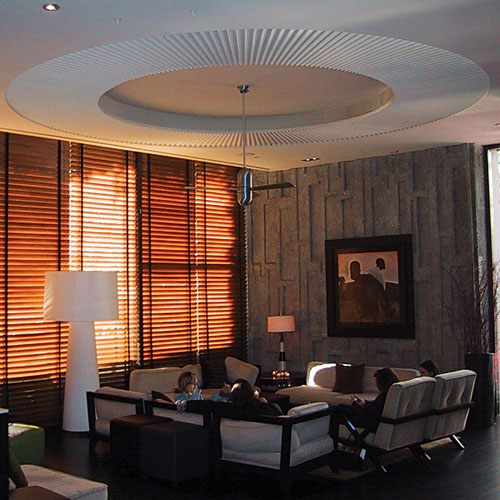Technologies for Energy Efficiency
Both vinyl and fiberglass frames are available that meet both ENERGY STAR as well as the stimulus package requirements for energy efficiency. Currently, there is a tax credit for homeowners up to 30 percent the cost of a window package up to $1500 per homeowner for replacement windows. To qualify, windows must have a U-Factor and SHGC of .30 or better. By providing metrics, testing and labeling, the NFRC assures that windows will work as specified by the professional who chooses an ENERGY STAR NFRC labeled window.
Fiberglass frames are available that match the beauty and profile of solid wood windows, while providing the durability and performance advantages of fiberglass. One of the primary advantages of this material is that it is made of glass. These frames expand or contract at the same rate as the glass it holds. This leaves less stress on the entire unit, increasing its longevity and durability.
Peter Ewers, AIA, LEED AP, principal of Ewers Architecture in Golden, CO, says that his "firm has specified fiberglass windows on several projects. We like the high performance we receive from these windows, and the strength of the assembly. And since fiberglass is essentially spun sand, we feel the embodied energy and other sustainable attributes are better than many of the alternatives."
FANS: PRACTICAL, EFFICIENT AND BEAUTIFUL
Many times professionals are divided between specifying highly designed building features or the common energy saving equipment that just "does the job." A technology first developed in the 19th century industrial revolution, ventilation fans are now available that meet both a professional's desire for high tech and great design. Until the past decade, most ceiling fans in the market were reproductions of Victorian models - primarily used in the home. Today, recognized industrial designers are providing professionals with designs for every style, from traditional to minimalist. There are fans that are designed for both the dining room in the home as well as the board room in commercial offices. New fans can be customized to have different blade configurations, blade size, and colors. Many provide remote controls for users as well as light source controls.
Some designers are recognized artists in their fields and like mid-century modernist designers, Charles and Rae Eames, are proud to bring design into ordinary objects. However, some designers have reduced fan efficiency for decoration. According to Rezek, "People assume that all contemporary fixtures are more functional than traditional ones, that is because contemporary fixtures are easier to clean and they seem to be more utilitarian based on their appearance. And because of their simplicity and lack of ornamentation, they also have an alliance with the industrial look. But all of this doesn't necessarily translate into function."16 It is important to select ceiling fans for efficiency as well as design.
 |
In the Los Angeles W Hotel lobby, this ceiling fan provides visual and sculptural impact to this commercial space. Diagram courtesy of The Modern Fan Co. |
Â
New fans are quieter and can be damp rated for outdoor applications and used in hotel balconies, porches and outdoor linnaes. The overall benefits of using fans are that they:
- Use low energy.
- Reclaim warm air trapped against the ceiling as a method to bring air down and equalize air temperature in a stratified interior space.
- Offset or supplement use of air conditioning.
- Provide individual environmental comfort - through the feel of air movement.









